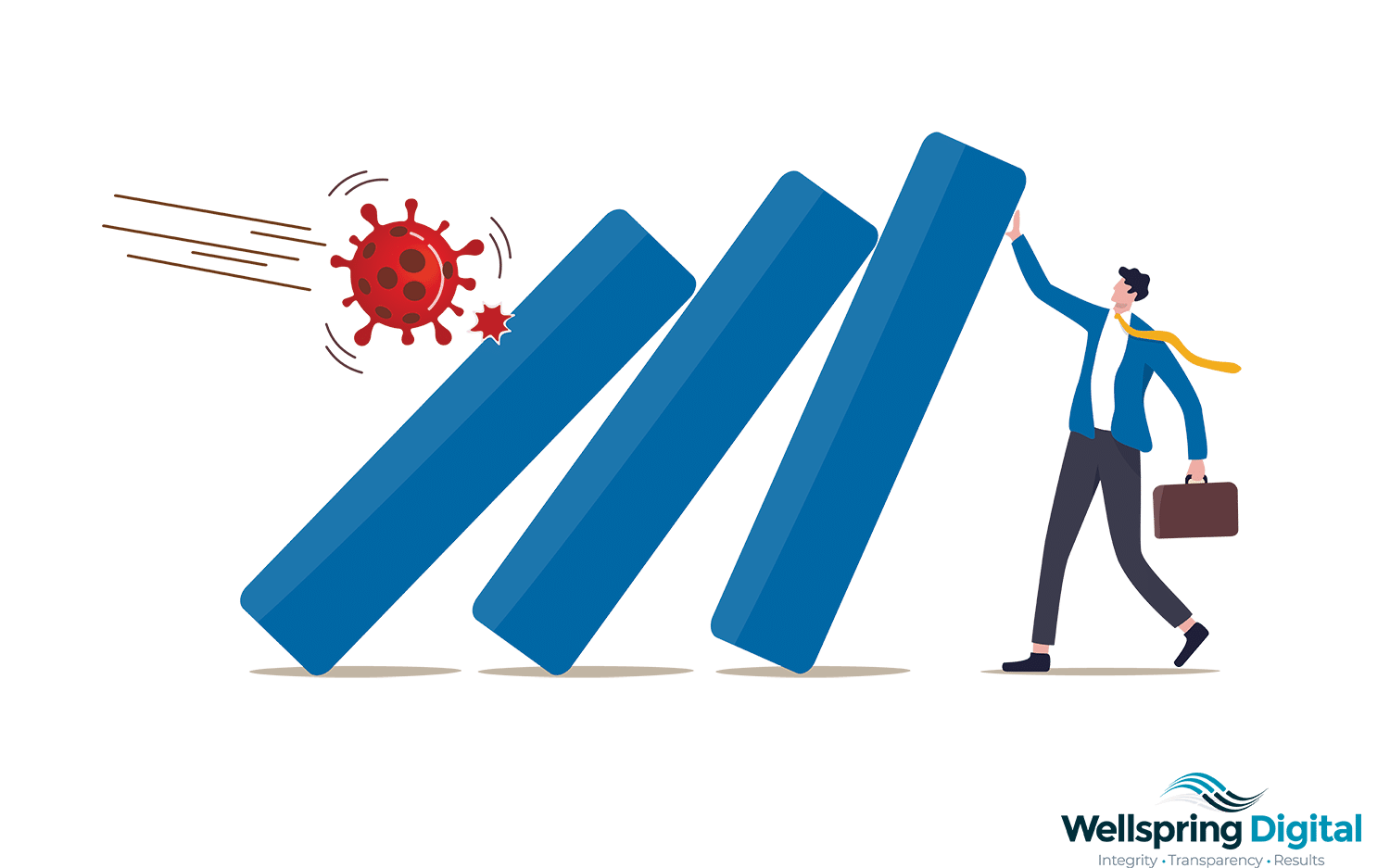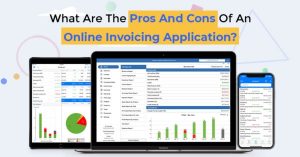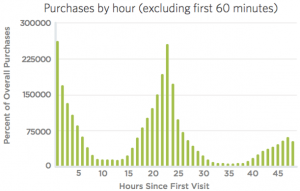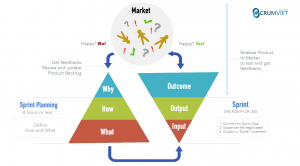
Sure, the stock market might surge on any given day, but, the stock market is not the economy. We’re in a recession, folks. Don’t believe me, I’ve covered my bases here…
- Liberals: NPR says we’ve been in a recession since February.
- Conservative: WSJ says “the U.S. officially entered a recession in February, marking the end of the 128-month expansion that was the longest in records reaching back to 1854.”
Let’s focus on that WSJ quote for a second. 128 months is a long time. That’s over 10 years of expansion. In fairness, we can’t say that the entire 10 years have been gravy for every company out there. Still, there has been a ton of money and lots of growth for small, medium, and large companies. The growth has been across most market segments.
So, what’s my point? My point is that businesses have enjoyed a robust economy for a long time. Marketing efforts can tend to slack in good times. “Why do we need to invest in marketing, we’re making tons of money.”
This attitude is short-sighted and can get you in trouble in a – gulp – recession. Well, here we are, in a recession. What’s your plan?
SEO Is A Long Game
We remind clients that you can’t turn a few dials and improve your SEO overnight. SEO is an ongoing effort that builds traffic over time. It takes a consistent methodology.
Our minimum SEO engagement is six months. This isn’t because we want to hold you hostage for six months (the bulk of our clients stick with us for longer). No, we do this because we know this is how long it can take to move the needle.
Did you sleep on your SEO during the good times and now feel a bit behind the eightball? Don’t beat yourself up too much, it’s very common, it happens to lots of companies.
We know you’re hustling to fill the hole left by COVID, but you also need to focus on the SEO long-game. Hustling provides business leads now; an ongoing SEO investment ensures the future upward trend of your business.
What Is SEO, Really?
What do I mean by SEO or Search Engine Optimization? SEO is…
- Website optimization for speed and usability regularly
- Building a content library for your target audience and/or your buyers
- Optimizing that content and your website code for maximum visibility
- Tracking search trends and Google updates to avoid a hit or adjust if one happens
- Building quality inbound links to your website and other sources of search engine visibility
- Cleaning up bad inbound links and negative SEO
- Monitoring all the dashboards and making adjustments as needed
The list could go on but, as you can see, SEO is much more than just content or UX. If you’ve read any of my older posts, you know that the previous statement is counter to arguments I’ve made in the past.
I used to argue that SEO was merely great content and a quality user experience (UX). However, even before I came to Wellspring Digital, I started to see the holes in this theory. What changed my mind?
I could see websites with amazing content and, what I thought to be, stellar UX lose serious rankings, traffic, and ultimately, leads. Why? No one was doing the other stuff on that list above. And that stuff is important!
Healthcare Websites and COVID-19, Huh?
In an upcoming interview with SEO Expert, Lily Ray, we talked about the impact of COVID-19 on search. She mentions one search casualty in a recent post she wrote. Read the post to get the full story. I will summarize here.
In 2007, Google came out with QDF, which stands for Quality Deserves Freshness. QDF means that the SERPs (search engine results pages) should give fresh results for every query.
So, if you search for something, Google wants to provide you with the most up-to-date information possible. Because of QDF, or some variation, there were some instant losers during the initial weeks of COVID-19.
One segment that took a significant hit was the healthcare industry. Healthcare website magazines like WebMD, Healthline, and others saw a major dip in traffic right around the same time the pandemic hit. You’d think it would be the opposite during a health crisis.
What happened? Well, Google, in its effort to produce “fresh” search results, started showing other websites for queries that these websites previously did well on. Any guesses what those websites were?
Government-backed websites and trusted news resources now ate up all those valued search results. Where WebMD was once the leader, sites like The NY Times, the CDC, and WHO were taking over.
See, even the big boys get hit.
You’re Already Behind on Your SEO
Sorry for being an alarmist, but it’s true. If you’ve been sleeping on SEO because you thought you didn’t need it, you’re likely paying the price now.
There is good news though. It comes at the expense of some, and I don’t mean to sound insensitive, but this is business…

The recession, meaning COVID and its fallout, has likely affected some of your competitors. If you are fortunate enough to still be in business, employing a crew of people, then you are positioned to take advantage of this mess.
Again, I hate to sound opportunistic in times of trouble but see the meme above. Now is a great time to invest in some real SEO.
I was discussing this with Joe Pulizzi on our Wellspring Digital Chat, and he had a great analogy. Specifically, we talked about content, which is part of SEO, but the analogy still works.
Look at investors, I mean the big money guys. When do they get excited? In a recession. Why? Because it’s the perfect time to buy. Buy low, sell high, right?
So, your Warren Buffets of the world are taking advantage of this time to invest at low prices. I’m not talking about the standard eTrade stuff, I’m talking about investing on a larger scale for a bigger return.
Investing is what you need to be doing right now with your SEOinvesting with time and money. The return on investment should be bigly if you do it right.
SEO Investments to Explore
Your marketplace is likely quite different than it was just a few short months ago. Remember early February? The good old days!
Now, even if your competition didn’t fall by the wayside, it’s entirely possible that their rankings fell or shifted in some way. And perhaps yours did as well. Now is the time to start that climb back up the rankings.
Don’t Trust the Dashboards
Now is the time to fire up those dashboards and take a deep dive to see what’s going on. We use a slew of them: SEMRush, AHRefs, Cora, Raven Tools, Google Webmaster (Analytics, Speed Test, Mobile Test, Keyword Data, etc), …
Karl Hindle, SEO Expert, CEO, and Bouncer for Wellspring Digital has a saying… “Don’t trust the dashboards!”
So, why am I telling you to fire them up? Because what he’s saying here is more nuanced. One dashboard will tell you one thing while another may give you different information.
Maybe trust but verify is better. If you only use Moz, for example, you will likely be missing the complete picture. Take the data Moz gives you and compare it against the data the other dashboards provide.
And what do you get? A complete picture of…
- Keywords you should and should not target
- Content opportunities
- What your competition is up to
- If there is anything out there hurting your rankings
- Whether your website is up to Google’s standards
- The real traffic to your site and what it’s doing (a much more complete picture than Google Analytics)
Once you have a realistic assessment of where you are and where your competitors are, you can start to develop a strategic plan. Building an SEO plan without a complete understanding of the data is like investing in a company without looking at their balance sheet.
Investing in the Now and the Future with Strategic SEO
The great news right now is that you can use your marketing budget to cover immediate needs as well as longterm needs. Remember when I said that content is a part of SEO? Well, content is also part of sales, brand building, and other efforts.
Using the data you’ve acquired from the dashboards, you can develop a targeted editorial calendar, targeted in that you’re writing content that will hit with your target audience now and help build the foundation for ongoing SEO efforts.
Great content like blog posts, eBooks, video, and podcasts provide two clear benefits…
- This content provides media support for efforts like sales, customer service, brand building, and audience outreach.
- Great content built with solid SEO data creates an evergreen foundation for SEO efforts moving forward (mixing metaphors is my specialty).
It’s next to impossible to see any significant gains in SEO without creating consistent, quality content. It can be done, but it’s a tough battle, and I don’t recommend it.
Here’s the thing, it’s no longer a foregone conclusion that good content will consistently rank and improve your website traffic. You need real SEO efforts to get quality website traffic, which leads to conversions, sales, and brand exposure.
Now is your chance to invest in the now and the future in three steps…
- Take a hard look at what is happening in your industry so you can plan your SEO effectively
- Create great content that is missing or underserved in your market
- Engage in a long-term SEO campaign to build traffic in the near-term and for the future
Now is your opportunity to shine as a business. It’s also the time for you to plan against a protracted recession or a future economic slowdown.
Digital & Social Articles on Business 2 Community
(66)
Report Post






